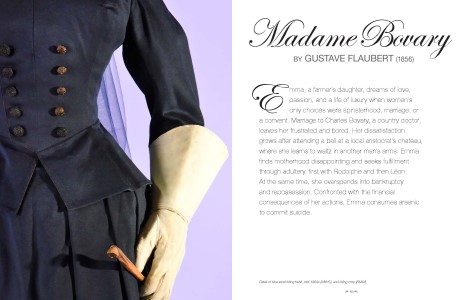
The Shippensburg University Fashion Archives and Museum (FA&M) continues to bring fiction to life with the release of a new catalog that highlights the yearlong exhibit “The Fashions of Fiction from Pamela to Gatsby.” The now closed exhibit brought famous literary characters to life by illustrating how clothing enhances the authors’ vision of their creations. A grant from The Coby Foundation Ltd. made the exhibit in the catalog possible, and garments from the Chester County Historical Society, Daughters of the American Revolution Museum, and Maryland Historical society were loaned to it as well. The catalog is available for purchase on the FA&M website.
In the new year, FA&M will open a new exhibit “Fashionable Dances and Dancing Fashions. The exhibit will feature outfits that were commonly worn to perform dances from the waltz to disco, and gives visitors a look into the history of dance.
Dr. Karin J. Bohleke, director of the SU Fashion Archives and Museum, guest taught about historical dance in America, which gave students the opportunity to learn about dances from the 1840s through the 1920s. The inspiration for the exhibit stemmed from Bohleke’s guest lectures in her Interdisciplinary Arts classes.
“I wanted to offer students a chance to see additional material relating to the topic in a very visual and engaging way,” she said. “At the same time, the exhibit also offers community and other viewers the exciting spectrum of social and costume history that they have come to expect from Fashion Archives and Museum displays.”
SU students and Shippensburg community members had a hand in the creation of this exhibit. They dressed the mannequins, performed some of the conservation, and worked on other aspects of the installation.
“The Fashion Archives is an exciting hands-on museum for students wanting to work on exhibits, historical collections and museums, curatorship, and other related aspects, so our most important partners in this exhibit are Ship students and engaged community members,” Bohleke said.
The majority of the artifacts for the exhibit are from the Fashion Archives and Museum’s permanent collection, but this exhibit was entirely the work of the staff. Another institution provided loans for garments that the SU Fashion Archives and Museum did not have.
Bohleke said viewers can look forward to seeing how the faculty, alumni, and community members wore a number of garments throughout history. “Our guests might be surprised to see what some faculty members wore on campus. In addition, the flapper dress, worn to a formal campus prom in 1927, provides an example of a Ship tradition that has been dropped over the decades.”
The exhibit will open in January and will run through July 2.
